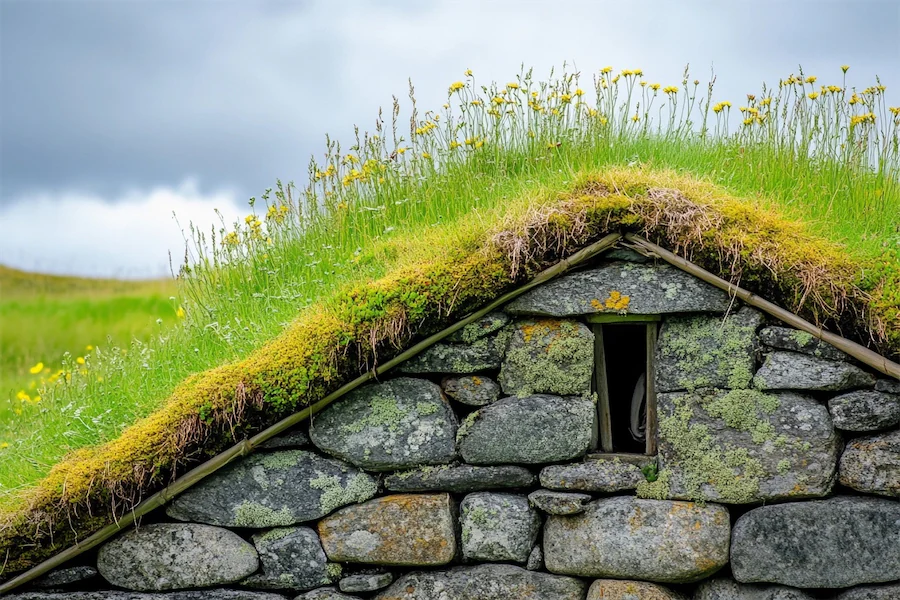Scottish croft houses, traditional dwellings of the Highlands and Islands, feature distinctive roofing styles that reflect the region’s history, climate, and available materials.
History and Origins of Scottish Croft Roofs
The design of croft house roofs has evolved over centuries, influenced by practical needs and cultural heritage. Early croft houses often utilized thatched roofs, employing locally sourced materials such as straw or reeds. The thatch was typically secured with ropes and weighted down with stones to withstand strong winds, a method well-suited to the harsh Scottish climate.
In the 19th and early 20th centuries, the introduction of corrugated iron provided a more durable and fire-resistant alternative to thatch. Many croft houses transitioned to corrugated iron roofs, which required less maintenance and offered improved protection against the elements.
Key Features of Scottish Croft Roofs
Scottish croft roofs are characterized by several distinctive features:
- Steep Pitch: The roofs often have a steep pitch to facilitate the shedding of rain and snow, essential in Scotland’s wet and snowy climate.
- Thatch or Corrugated Iron Materials: Traditional thatched roofs were constructed using materials like straw or reeds, while later adaptations saw the use of corrugated iron sheets.
- Crow-Stepped Gables: Some croft houses feature crow-stepped gables—a stepped design at the top of the gable ends—which add structural stability and aesthetic appeal.
Applications of Scottish Croft Roofs
The roofing styles of croft houses are integral to their functionality and charm:
- Residential Dwellings: The roofs provide essential protection against the elements, contributing to the longevity and habitability of these rural homes.
- Cultural Heritage Sites: Preserved croft houses with traditional roofing serve as tangible links to Scotland’s architectural and social history, offering insights into past rural life.
Considerations When Restoring or Building Scottish Croft Roofs
When restoring or constructing a croft house roof, several factors should be considered:
- Material Selection: Choosing between traditional thatch and more modern materials like corrugated iron or slate depends on factors such as historical accuracy, durability, and maintenance requirements.
- Structural Integrity: Ensuring the roof structure can support the chosen materials is crucial, particularly when dealing with heavier options like slate.
- Weatherproofing: Incorporating proper insulation and waterproofing techniques is essential to enhance energy efficiency and protect against moisture ingress.
Conclusion
Scottish croft roofs are emblematic of the region’s architectural heritage, showcasing a blend of practicality and tradition. Whether maintaining historical authenticity or adapting to modern needs, these roofing styles continue to define the character of Scotland’s rural landscapes.
